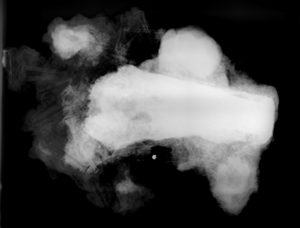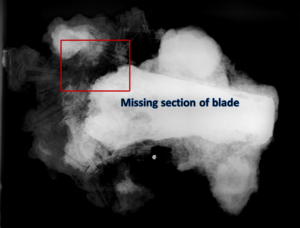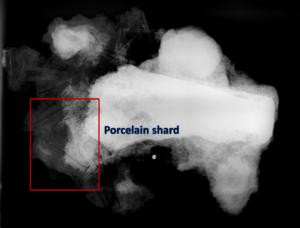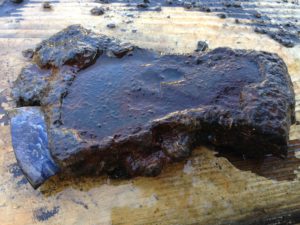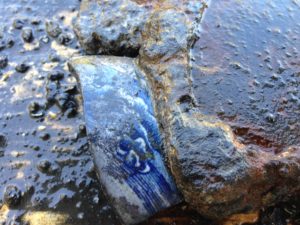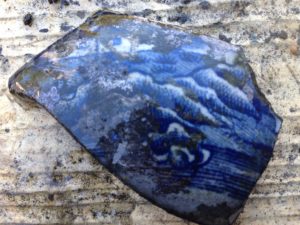Artifacts are not always readily recognizable when looking at the mass of sand and shell that is brought up. We take X-rays of the concretion to see if there are any artifacts of interest or something unique within. If there are items we would like to work on, we try to identify what the artifact is and what to expect when chiseling off the concretion.
This, however, primarily limits us to whatever shows up the best in our x-rays. Ordinarily, lead and lead-containing alloys or materials, such as pewter, have the brightest signature in an X-ray. This is followed by cupreous objects like brass and bronze. Cast and wrought iron artifacts are generally the third most present in X-rays, but it depends largely on how much iron has corroded out of the object. Additionally, gold and silver would appear in X-rays if they were to show up on our site.
The common theme here is that the prevalence of artifacts which survive and are excavated are metal.
When the Storm Wreck ship ran aground and wrecked there was undoubtedly a wide variety of materials on board. However, as the vessel broke apart and the remains scattered, the heavier metal objects sank and more or less remained in their original point of deposition. The lighter artifacts, such as wood, textiles and glass, most likely were pushed further or floated away from the wreck site. There are some non-metal items that have been excavated and identified so far from the site, but they are scarcer rather than the norm.
It was with this mindset that I usually begin working on artifacts from the Storm Wreck site. I chose to conserve artifact 13S 319.1 for a few reasons.
In the X-ray, it appeared to be a small ax head and the only one of its kind identified from the wreck so far. Also in the X-ray were a small lead birdshot and numerous nails, which had completely corroded away, near the blade. One section of the blade, the bit toe, had corroded away as well, leaving a large clear spot in the image.
Because of these missing portions, I began air-scribing toward the rear (or poll) of the axe head. I planned on removing as much concretion as possible and leaving a small section covering the corroded area. I would then use the remaining sediment as a mold and pour epoxy into the void of the blade, making a nice cast replica of the lost area.
After cleaning off almost all the ax, I began removing the nail section in preparation to mold and cast the epoxy. It was then that I came across a very unexpected and welcome surprise. Located on the lower section, or the bit heel, of the ax blade was a ceramic fragment. This was indistinguishable in the X-ray and would have been easily overlooked for conservation had it not been for the ax head.
Ax head with porcelain shard
It turned out to be a piece of porcelain measuring approximately 2.5 x 1.75 inches with some imagery still visible. The blue and white decoration shows water and waves near some small hills or dunes below two small white buildings. I was able to determine from the scenery that this was part of a larger pattern called “Fisherman and Cormorant.”
Taking this knowledge, I asked lighthouse archaeologist Brendan Burke for assistance with identifying the piece. He was able to figure out it was porcelain and most likely from what is known as a Liverpool bowl. The design appears to be transfer printed onto the surface, rather than hand painted. This indicates the piece was a popular design and part of a standardized production process. One possible manufacturing site is Caughley in Shropshire, England. Around 1775 to 1799, Caughley became known for high quality soft-paste porcelain with a characteristic blue design.
Further research is needed to identify the porcelain and help expand our knowledge. Hopefully, additional sections of the bowl will be found in other concretions and possibly help us reconstruct the artifact. I am currently re-examining X-rays of concretions from the immediate area the ax was found.
Maybe luck will strike again and another shard will be stuck to a metal object of interest!
Andrew Thomson is the Assistant Conservator for the St. Augustine Lighthouse & Museum. He received his graduate degree and training from the Conservation Research Laboratory at Texas A&M.


